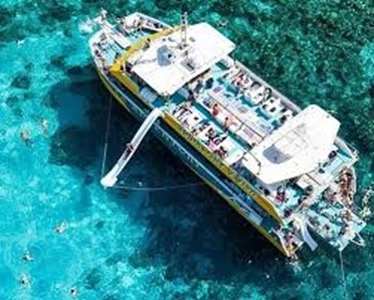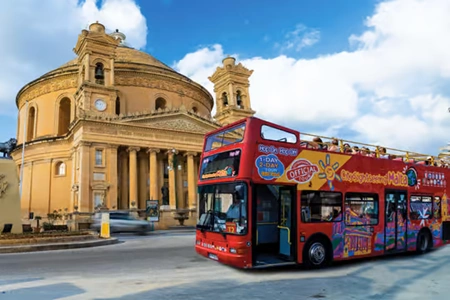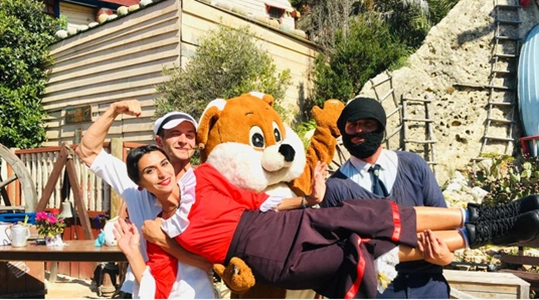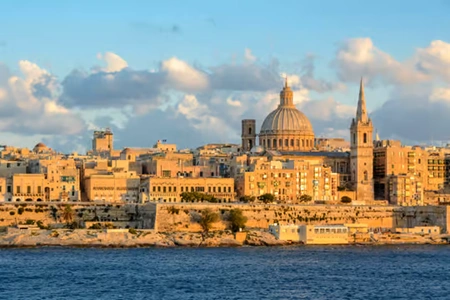Bormla
This area was already inhabited during megalithic times. During excavations, three megalithic structures were found together with many shards, tools and flints.
App info: In our app you will find the location, address, opening hours and admission / entrance fee of this spot. If you use the app, you will find additional information and news about this spot on this page.
In the Phoenician period, Bormla served as a hiding place for their ships. Cemeteries have been found in the valley of Għajn Dwieli, the hills of Ta 'Kordin and the hills of Ta' Ġerman.
During the Carthaginian and Roman occupation, the harbour facilities of the creek were considerably improved. The activities were moved to Dockyard Creek, the second creek of Bormla.
According to legend, St. Paul left the island via Dockyard Creek in the year 61 AD.
Caves in the area show that they served as a gathering place for prayer and worship.
Caves in the area show that they served as a gathering place for prayer and worship.
A troglodytic chapel has been excavated from the early Christian or Byzantine period.
In 1584, Bormla broke away from the religion of Birgu (Città Vittoriosa) and Bormla (Città Cospicua) became its own parish in 1586.
When the nearby villages of Zabbar and Żejtun were attacked by the Turks, the Domenican Monk Vincenzo Maculano the Firenzuola suggested making a reinforced defensible line.
The first stone of these Santa Margherita Lines, also known as the Firenzuola Lines, was laid in 1638 by Grandmaster Giovanni Paolo Lascaris and was completed 70 years later in 1722. The line was designed by Italian Catholic Cardinal military architect Vincenzo Maculani.
Because of this strong Fortification with its bastions, Grandmaster Marc'Antonio Zondadari called the city of Bormla "Città Cospicua".
In 1776, the Order of St. John started the construction of a shipyard. The arrival of this shipyard played an important development in the city.
The Royal Navy was prominent during the British period and maritime work increased considerably. Think of the Crimean War, First and Second World War.
Bormla was bombed considerably during the Second World War.
After the Second World War and after the end of the British period, the maritime activities decreased considerably.
Address and street / location can be found on our map, click on Guide in the menu bar and you will get a map with markers. | |
Book: Buy tickets for place of interest. sights, hop on hop off buses, exhibitions, safari, etc or book and tour. | |
Additional information
Churches
Church of the Immaculate Conception
The parish church Collegiate Church of the Immaculate Conception is dedicated to the Immaculate Conception and was elevated to the dignity of a collegiate church in 1822.
In the church you will also find a painting by Peter Paul Caruana, which was inspired by Ludovic Mifsud Tommasi.
In this church there is also a chapel with the crucifix from 1731, this chapel also has a separate entrance on Oratory Street.
St. John Almoner
The original chapel was built in 1373, but was outside the Margherita Lines, and was destroyed by the construction of the Cottonera Lines. The current chapel was built in 1682 and was financed by the monk Pierre. The chapel suffered damage during the Second World War. Originally there were two paintings made by Mattia Pretti.
The original chapel was built in 1373, but was outside the Margherita Lines, and was destroyed by the construction of the Cottonera Lines. The current chapel was built in 1682 and was financed by the monk Pierre. The chapel suffered damage during the Second World War. Originally there were two paintings made by Mattia Pretti.
You will also find:
St. Paul’s Church;
St. Theresa’s Church;
St. Margaret's Church;
St. Joseph’s Conservatory;
St. Thomas' Chapel.
St. Paul’s Church;
St. Theresa’s Church;
St. Margaret's Church;
St. Joseph’s Conservatory;
St. Thomas' Chapel.
Sights
The Santa Margherita Lines and St. Helen's Gate which is also part of the Margherita Lines.
The Santa Margherita Lines and St. Helen's Gate which is also part of the Margherita Lines.
Windmills
Almost all windmills were built in the period 1663 and 1773 by the Order of St. John. Rafael Cottoner, brother of the Grandmaster, built a windmill in St. John Street and one in Windmill Street.
Monuments
At the end of the Second World War a pilgrimage was held from Birkirkara to Bormla in 1944 with the statue of the Immaculate Conception, because the parish church, despite the heavy bombing, was miraculously undamaged. On November 19, 1994, the 50th anniversary of this pilgrimage was celebrated with the inauguration of a memorial for war victims in Bormla shipyard.
At the end of the Second World War a pilgrimage was held from Birkirkara to Bormla in 1944 with the statue of the Immaculate Conception, because the parish church, despite the heavy bombing, was miraculously undamaged. On November 19, 1994, the 50th anniversary of this pilgrimage was celebrated with the inauguration of a memorial for war victims in Bormla shipyard.
Others
A walk through several medieval streets in Bormla is definitely recommended, such as Nelson Street, Alexander Street, St. Lazzarus Street, Narrow Street, Matty Grima Street and St. Michael Street.
A walk through several medieval streets in Bormla is definitely recommended, such as Nelson Street, Alexander Street, St. Lazzarus Street, Narrow Street, Matty Grima Street and St. Michael Street.





